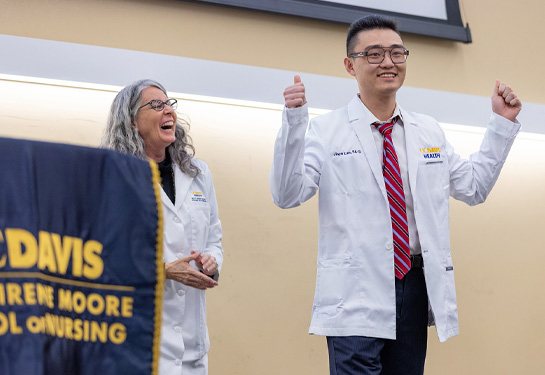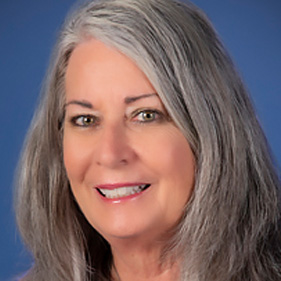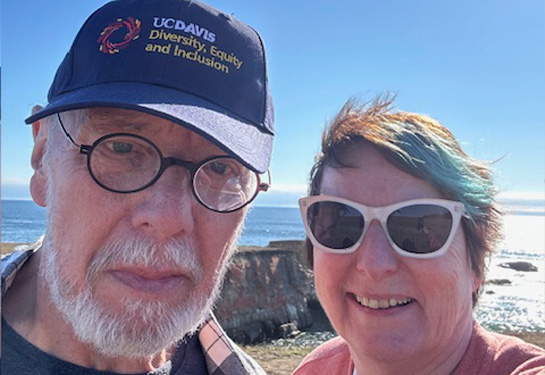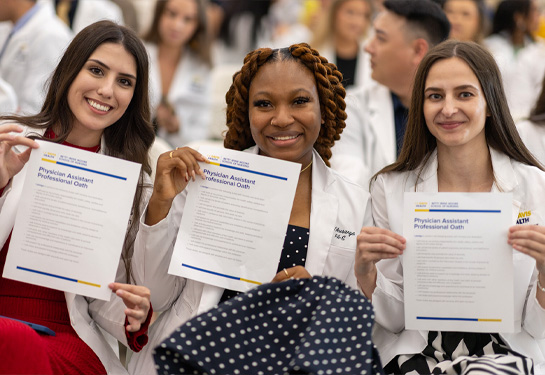Future P.A.s suit up for patient care with white coats
Ceremony marks physician assistant students’ entry into clinical experiences
Future physician assistants (P.A.s) from the Class of 2024 took a big step in their journeys to become to health care providers last Friday. The 64 members received their white coats during a ceremony for the Betty Irene Moore School of Nursing at UC Davis.
The students began the 27-month Master of Health Services — Physician Assistant Studies Degree Program in June 2022. While most of their studies have focused on teacher-centered instruction, they soon enter patient-facing encounters in their clinical experiences.
The introduction of white coats recognizes students who seek a role in clinical practice. The white coats symbolize the responsibilities they accept in caring for individuals. These include competent evidence-based and person-centered care, excellent interpersonal skills and communication, systems-based practice and the highest level of professionalism. The ceremony underscores those responsibilities and the students’ commitment to care for the people they encounter over the span of their careers.
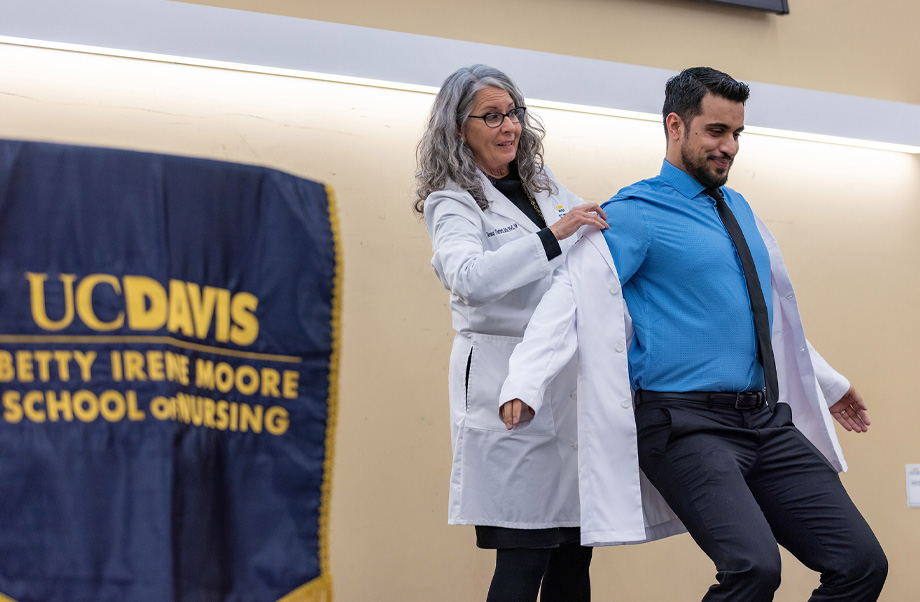
“Wearing a white coat increases your responsibility to be a perpetuator of leadership, diversity and humility while in practice. Internalize your ‘why’ for becoming a P.A. and continue to persevere in your education with these pointers as a guide,” said second-year P.A. student Victoria McKinney-Brooks. During the ceremony, she spoke to the students gathered with faculty and staff at Betty Irene Moore Hall as family and friends watched the event on Facebook Live.
One by one, students walked across the stage to receive their white coats. They were assisted in putting them on by either school faculty, family members or important mentors in their professional journey. They also received some words of advice.
“Our goal here at UC Davis Health is to develop the highest quality, compassionate health care providers who are prepared to deliver care in areas where it’s needed most, thus expanding access for a growing population,” P.A. Program Director Teresa Thetford told the students. “We are also committed to developing clinicians who are fully prepared to work as members, and leaders, of health care teams.”
Our goal here at UC Davis Health is to develop the highest quality, compassionate health care providers who are prepared to deliver care in areas where it’s needed most, thus expanding access for a growing population.—P.A. Program Director Teresa Thetford
“We begin 2023 with renewed optimism that the trials of the pandemic are behind us. But the lessons it has taught us — and its lasting effects on health care — are not going away,” added Dean Stephen Cavanagh. “Your contribution and leadership in health care have never been more needed.”
According to the American Medical Association, the white coat has served as the preeminent symbol of physicians for over 100 years. Prior to that, health care professionals wore black, which was considered formal attire. At the end of the 19th and the beginning of the 20th centuries, when medicine became based on science, the pureness of medicine became reflected in the garb of physicians and nurses. By 1915, almost all licensed physicians in the United States wore white coats.

Throughout their clinical exposures across the next 21 months, P.A. students will rotate throughout UC Davis Health and community clinics to work with patients under the guidance of preceptors, who act as mentors. They also have an opportunity to work alongside nurse practitioners, nursing and medical students in teams to provide care for the underserved communities of Sacramento.

